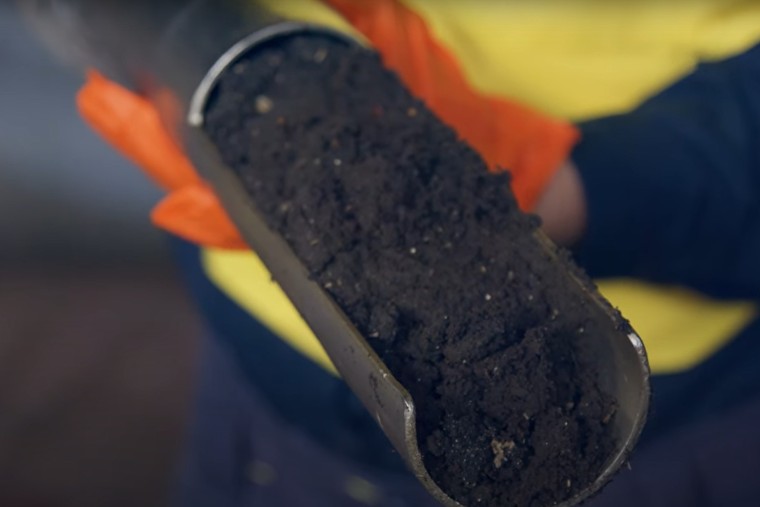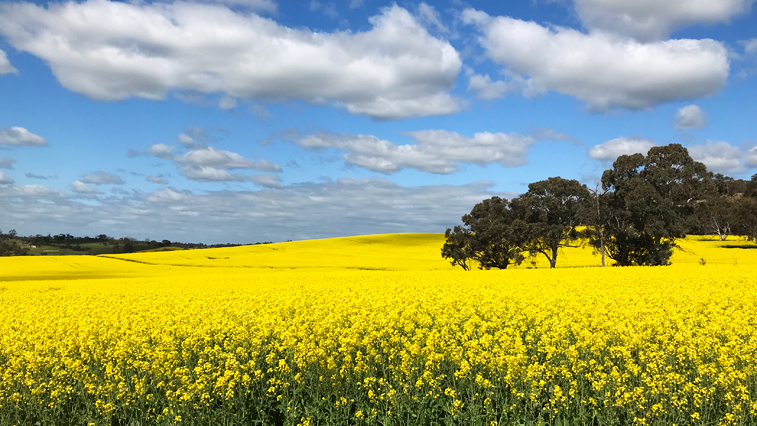Biosolids
Reusing biosolids is one of the ways we're responding to the impacts of climate change in Western Australia. Biosolids are the organic sludge from domestic and industrial wastewater, that has undergone treatment to significantly reduce pathogens and volatile organic matter. It can be used as natural fertilisers and soil improvers. In WA, we use biosolids to grow broad-acre crops such as wheat, oat, canola, lupins and with additional processing, for compost.
Our Biosolids and Sludge Management Policy sets out our commitment to sustainability, waste reduction and a circular economy, in which human health and the environment are protected. We aim to recover 100% of this valuable resource from Perth metro and 75% from regional areas.

How do we produce biosolids?
We treat 80% of WA’s wastewater at our 3 largest water resource recovery facilities – Woodman Point, Beenyup and Subiaco. A major by-product of this process is sludge - the solids component that receives further treatment before either having lime applied or undergoing anaerobic digestion:- liming increases the pH to reduce pathogens
- anaerobic digestion stabilises the organic matter while reducing the number of solids and level of pathogens.
The solids resulting from the liming and digestion treatment process are called biosolids.
During anaerobic digestion, a large amount of organic matter is biologically converted into methane gas that can be reused by the treatment facility for power or heating.
Finally, a polymer is added to aid the mechanical dewatering of biosolids. This results in a soft-textured substance with an earthy odour and easy handling properties.
Types of biosolids we produce
We produce 2 types of biosolids suitable for direct land application in broad-acre agriculture:- Biosolids cake is produced at Beenyup and Woodman Point water resource recovery facilities. Raw sludge is stabilised by anaerobic digestion and dewatered, resulting in biosolids cake with an average of 20% solids.
- Lime-amended biosolids is produced at the Subiaco Water Resource Recovery Facility. The raw sludge is dewatered followed by stabilisation with lime resulting in a biosolids cake with an average of 30% solids.
Another processed form of biosolids is produced by composting sludge with green waste and other organic materials. This form of biosolids is suitable for use in domestic gardens, as well as public parks and gardens. Several private companies undertake this activity using biosolids we produce following strict environmental and health protocols.
What are the benefits of biosolids?
Biosolids are rich in nutrients and organic matter, making them good natural fertilisers and soil improvers.
Among their benefits, biosolids can:- improve crop production
- enrich tree plantations
- reduce landfill
- improve economic returns
- provide topsoil for land used for recreational uses.
How are biosolids used?
Farmers and other users have been beneficially using biosolids for years because they help promote crop and plant growth. Unlike synthetic mineral fertilisers that can leach excess nutrients into waterways, organic biosolids bind quickly to soil particles with nutrients slowly mineralising for plant growth over a longer period.

- applied directly to land at the rate at which plants can uptake the nutrients - most of the biosolids produced in WA are used in this way
- composted at a licensed facility where the end-product is suitable for use on home gardens or municipal parks and gardens - about 15% of the overall sludge production from the metropolitan resource recovery facilities are used this way
- disposed at a suitable landfill site.
Only biosolids that meet specific quality criteria are suitable for land application.
Want to learn more?
- Biosolids 101 - download our booklet for a comprehensive introduction
- Biosolids handling - download our fact sheet for practical guidance